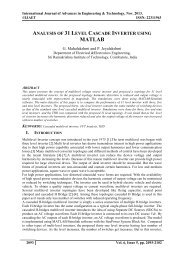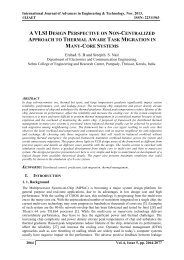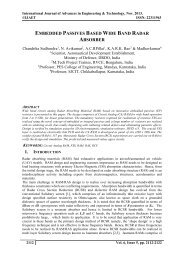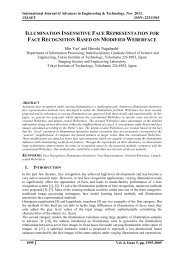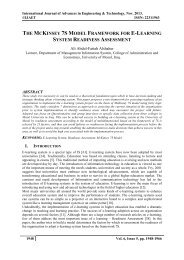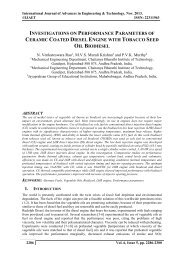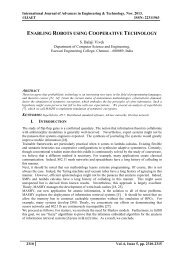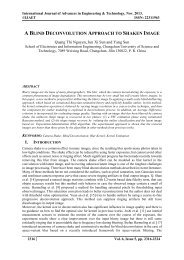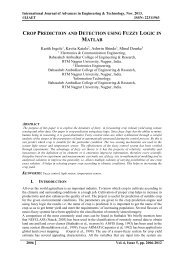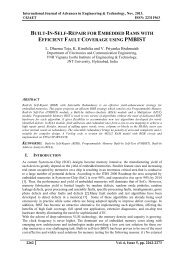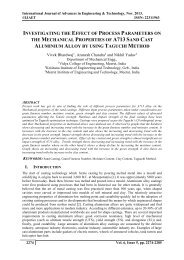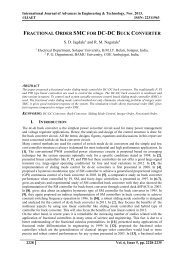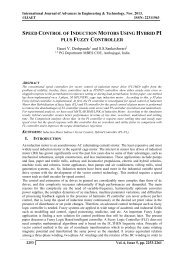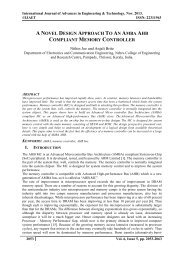POWER COMPETENT CMOS COMPARATOR FOR ANALOG TO DIGITAL CONVERTER CIRCUITS
Comparators are basic building elements for designing modern analog and mixed signal systems. In this paper, a Power efficient CMOS comparator was implemented by using low power technique. Among all the comparators, the dynamic CMOS comparator was chosen because of the efficiency which is highly needed in the case of ADC circuit. Speed and resolution are two important factors which are required for high speed applications. By using the low power technique we have reduced the power of the dynamic CMOS comparator from 16% to 45% .Cadence tool was used to implement the comparator in transistor level .The measured and simulation results show that the dynamic latched comparator design has higher speed, low power dissipation. We have used 180nm technology to analyse the comparator.
Comparators are basic building elements for designing modern analog and mixed signal systems. In this paper, a Power efficient CMOS comparator was implemented by using low power technique. Among all the comparators, the dynamic CMOS comparator was chosen because of the efficiency which is highly needed in the case of ADC circuit. Speed and resolution are two important factors which are required for high speed applications. By using the low power technique we have reduced the power of the dynamic CMOS comparator from 16% to 45% .Cadence tool was used to implement the comparator in transistor level .The measured and simulation results show that the dynamic latched comparator design has higher speed, low power dissipation. We have used 180nm technology to analyse the comparator.
Create successful ePaper yourself
Turn your PDF publications into a flip-book with our unique Google optimized e-Paper software.
International Journal of Advances in Engineering & Technology, Nov. 2013.<br />
©IJAET ISSN: 22311963<br />
mode and the compare mode.in the rest mode the nodes of the latch are shorted to set it to an unstable<br />
high gain mode. In the compare mode these nodes are released. Depending on the input voltage the<br />
latch will switch vary fast to high (low) state due to the positive feedback in the latch.<br />
Figure.4: A latched comparator circuit<br />
The drawback of this simple structure is:<br />
At the end of the compare mode one of the input transistor is forced into the triode region.as a<br />
result the total speed of the comparator (including the rest phase) is increased. This is due to<br />
the required extra settling time in order to achieve the necessary accuracy in the rest phase<br />
The switch which controls the two modes is connected to the input transistor. As a result<br />
clock feed-through can be fed to the input nodes. This can limit the comparator accuracy<br />
especially when a voltage with a high source impedance is being compared.<br />
The accuracy of this comparator is mainly limited by the unsymmetrical latch structure (only<br />
NMOS devices) and by the latch transistor mismatches. These effects are analyzed more in<br />
detail in the next section<br />
To overcome the two first problems the input stage of the circuit is usually modified using an extra<br />
current mirror as is presented in Figure 5. With such a structure a response time (rest phase include) of<br />
30-40nSec can be achieved.<br />
2.2 A High Speed Accurate Comparator<br />
Figure.5: An improved latched comparator<br />
In the realization of high speed <strong>CMOS</strong> flash A/D converters and high accuracy <strong>CMOS</strong> over sampling<br />
A/D converters, high speed <strong>CMOS</strong> comparators are indispensable. The high speed structure is<br />
presented in Figure 6. It consists of two inverters (M13, M14 and M11, M12).<br />
2199 Vol. 6, Issue 5, pp. 2196-2210




